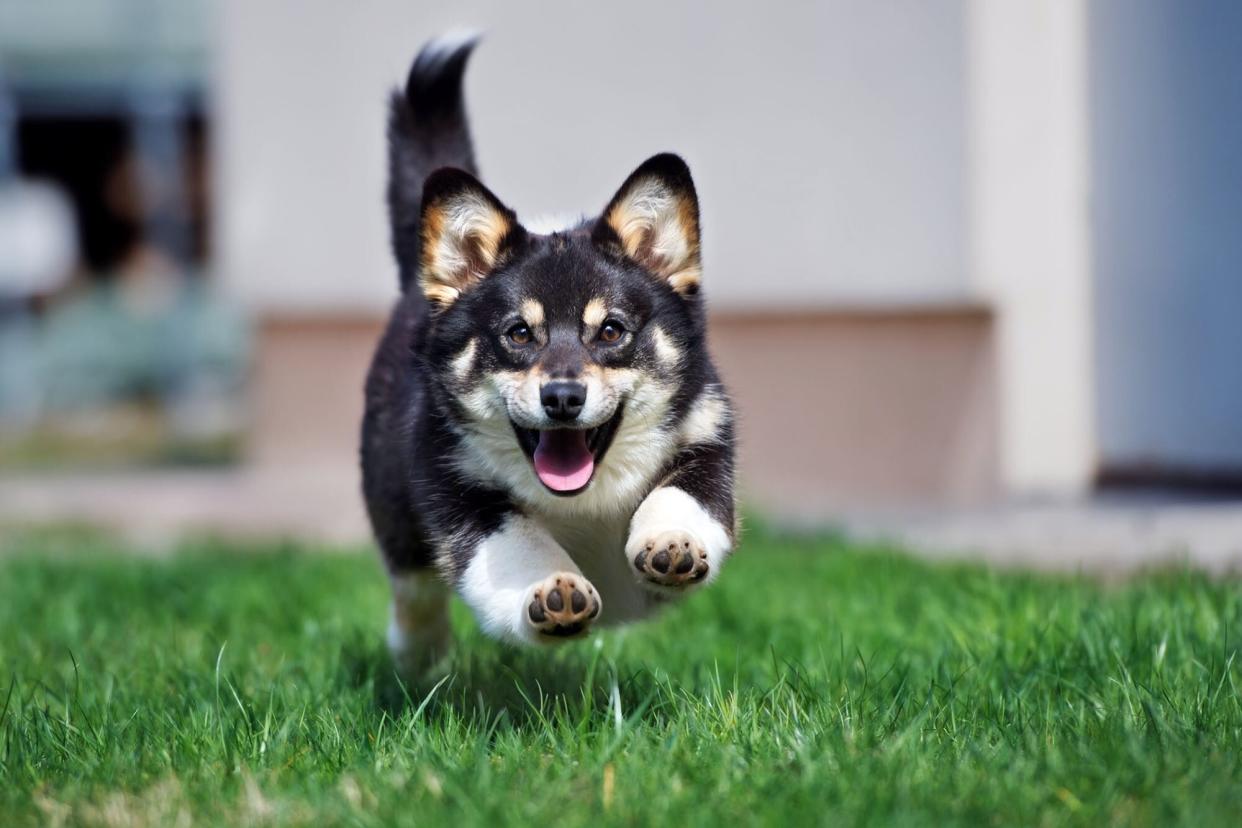Dog Zoomies Explained: 6 Reasons Your Dog Goes Bonkers Sometimes

otsphoto / Adobe Stock
Dog zoomies are a natural canine phenomenon. It's when dogs, for seemingly no reason at all, suddenly burst into movement—racing around, spinning in circles, bouncing up and down, or parkouring over the couch. Although there appears to be no cause, those sudden bursts of energy may actually serve a purpose, experts say.
What Causes Dog Zoomies?
The technical name for dog zoomies is frenetic random activity periods (FRAPs), according to the American Kennel Club. And they're just another weird canine behavior, like reverse sneezing, that serves a purpose: to release pent-up energy. "Generally speaking, dog zoomies happen when dogs are feeling happy and excited," says Amelia Wieber, dog behavior consultant, trainer, and Daily Paws Advisory Board member. It's just good fun for your pup (until a kid or a vase gets knocked over).
But too many zoomies may signal that your dog needs more physical activity or mental stimulation. "Zoomies can happen regardless of how much you exercise your dog," says Wieber. "But if your dog is having more and more zoomies and it feels like it's becoming unmanageable, your pooch may need more exercise."
6 Common Reasons Why Dogs Get the Zoomies
All dogs, from basset hounds to Great Danes, get the zoomies. Puppies and young dogs may zip around more often simply because they have more energy to burn than older dogs. But pups in their golden years can still get zoomies too.
Dogs frequently get zoomies at certain times. And although we can't know for sure why they do it, here are some likely reasons:
1. Release tension and anxiety
Dogs frequently zoom around after bath time, which is probably a way for them to get rid of anxious energy. "When there's been some event that's happened and it was stressful or exciting, like taking a bath, zoomies help dogs release that built-up tension," says Lisa Radosta, DVM, a board-certified veterinary behaviorist at Florida Veterinary Behavior Service.
2. Warm up
Dogs who jet around the house after a walk or coming in from the outside may be trying to warm up. This could also be the case for dogs that do mad dashes after getting out of the bath, pool, or lake.
RELATED: How Cold Is Too Cold for Dogs?
3. Celebrate a feel-good moment
Many pet parents note that their dogs get zoomies after pooping. "It's like they just unloaded something major and it's time for a whacked-out celebration," says Radosta. "But sometimes if dogs have a little bit of poop stuck to them, they may also run around to escape from the poop. That might look like zoomies, too."
4. Act on primal instinct
It's common for zoomies to happen at specific periods during the day, says certified professional dog trainer and Daily Paws Advisory Board member Irith Trietsch Bloom. It may have to do with their built-in biological rhythms. "Dogs tend to have a burst of energy in the morning and in the evening, which probably has to do with hunting cycles," she says. "For example, coyotes hunt at dawn and dusk because that's when prey is waking up and falling asleep and they're more vulnerable."
5. Relieve pain
Almost always, dog zoomies are a positive event. But occasionally, it could be triggered by a sharp but passing pain in the hind area, says Radosta. For example, pain from a flea bite or arthritis that's acting up may spook your pup, who then runs to escape it.
6. Show excitement
Sometimes dogs whiz around when something happens to rev them up, like seeing a special person or another dog. "They just can't contain their excitement," Bloom says.
Dog zoomies are hilarious and entertaining and Radosta encourages pet parents to make the most of it. "When my own dog gets the zoomies, I act like I'm stalking him," she says. "That makes him a lunatic. He's like a category-five hurricane all over the place and jumping around. So you can really have a good time with the zoomies."

